Want Showstopper Trees? Grow these 7 Unique Beauties for Dramatic Bark Tone and Texture to Add Some Winter Wow
Think bark is boring? These 7 breathtaking trees prove otherwise, offering extraordinary textures, bold color and instant character that turn even winter into a showpiece

Amy Draiss

In truly memorable gardens, it’s the details that make the difference — and few details are more overlooked than tree bark texture and color. While leaves and blooms get all the attention, bark is what carries your landscape through the quiet months, adding color, pattern, and texture when everything else fades away.
Consider what your trees will look like in all seasons, but especially against the backdrop of a gray winter sky or white snow. There are trees for every yard, from snowy white barked tree types to glossy cinnamon-red tree bark specimens. Often with peeling curls that look like nature’s own artwork, trees with striking bark will bring extraordinary dimensions to your garden all year long. Some varieties glow in winter light, while others stand out against summer foliage or pop beautifully after rainfall.
Whether you’re working with a small yard or planning a four-season landscape, choosing a tree for their bark is a simple way to add drama and interest — even in the depths of winter. These 7 enchanting bark beauties look good in every season, not just when they’re in leaf. Of course, some grow better in certain climates and regions. But if you want a landscape that stays interesting long after the leaves have fallen, these trees with striking, colorful bark deliver unforgettable texture.
Best Trees to Grow for Bark
When choosing trees for your garden or yard, you need to consider several factors. The tree type should be suitable for your climate and hardiness zone. Consider whether you want evergreens or deciduous trees. Size is also important. Will your tree of choice fit in your yard once it’s reached its mature size?
After considering these practical factors, you can have fun choosing trees with character, in the form of interesting and attractive bark. Leaves and flowers are great, but bark decorates your garden year-round, so it matters. It is often one of the most underrated design elements in the garden, as we often spend more time thinking about how big trees can get and how long they might flower for. Yet it offers sculpture-like structure, winter color, texture, and visual dynamism during quieter months when flowers and foliage disappear.
Whether you prefer smooth, glossy trunks, peeling curls, patchwork color, or dramatic white tree bark you can spot from the street, there’s a tree here that fits your style. Presenting some of the most striking four season trees with loose bark, smooth or scaly bark, and even mixed bark colors — each chosen for its unique texture, standout seasonal beauty, and ability to elevate a garden from ordinary to unforgettable.
1. Paper Birch
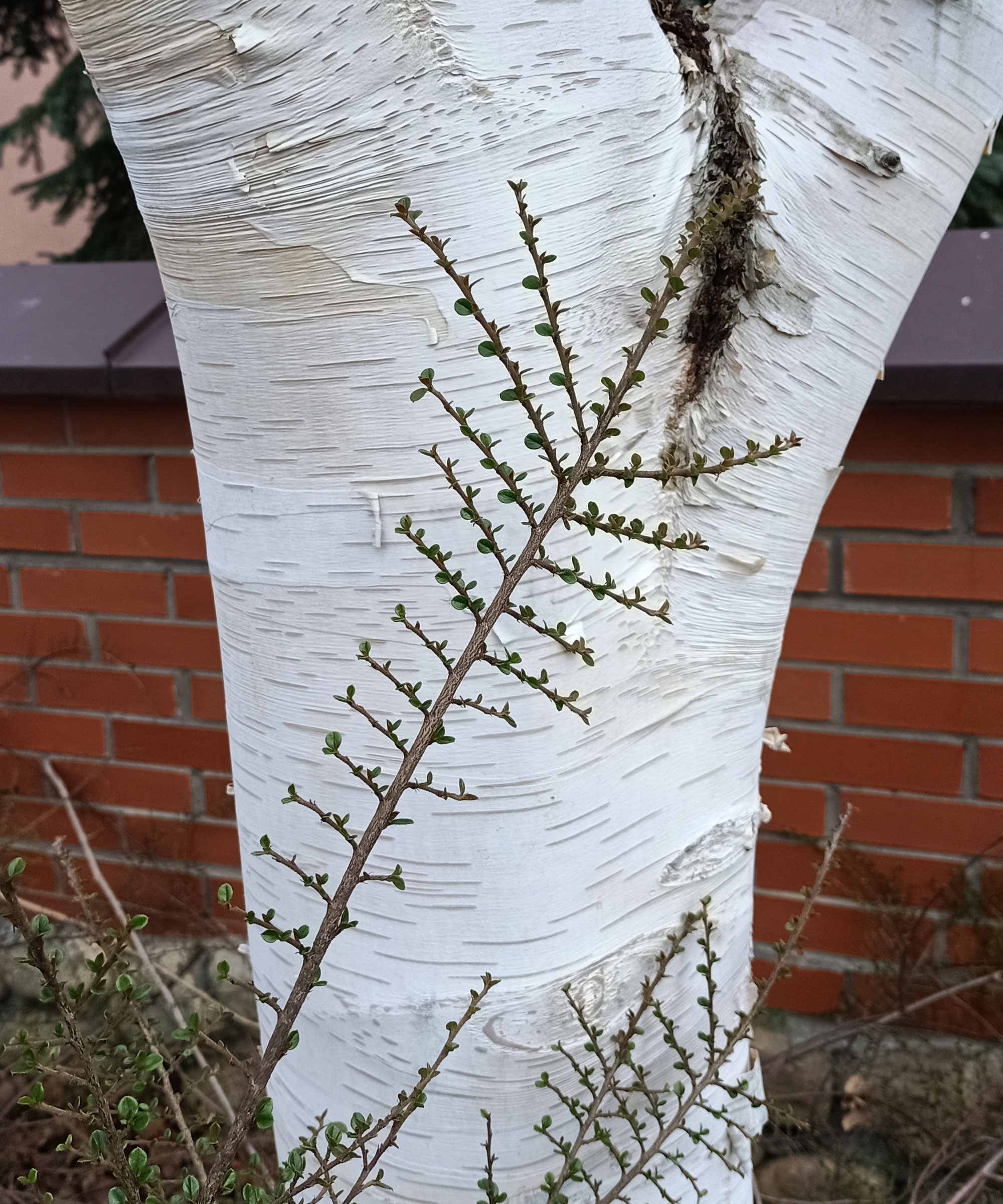
Paper birch (Betula papyrifera) is the classic white barked tree. Not only is the birch bark white, but it peels off in curly, papery sheets, providing both interesting color and texture. Paper birch is native to Canada and most northern US states. It is suitable for growing in USDA hardiness zones 2-7.
Sign up for the Gardening Know How newsletter today and receive a free copy of our e-book "How to Grow Delicious Tomatoes".
This tree makes a stunning driveway tree, and the white tree bark is a beautiful contrast to green grass and the tree's leaves which turn golden in fall. Paper birch grows to 50-70 feet (15-21m) at maturity. It grows best in full sun and in moist soil. You can pick up dormant bareroot plants for Paper Birch from Amazon.
2. Paperbark Maple
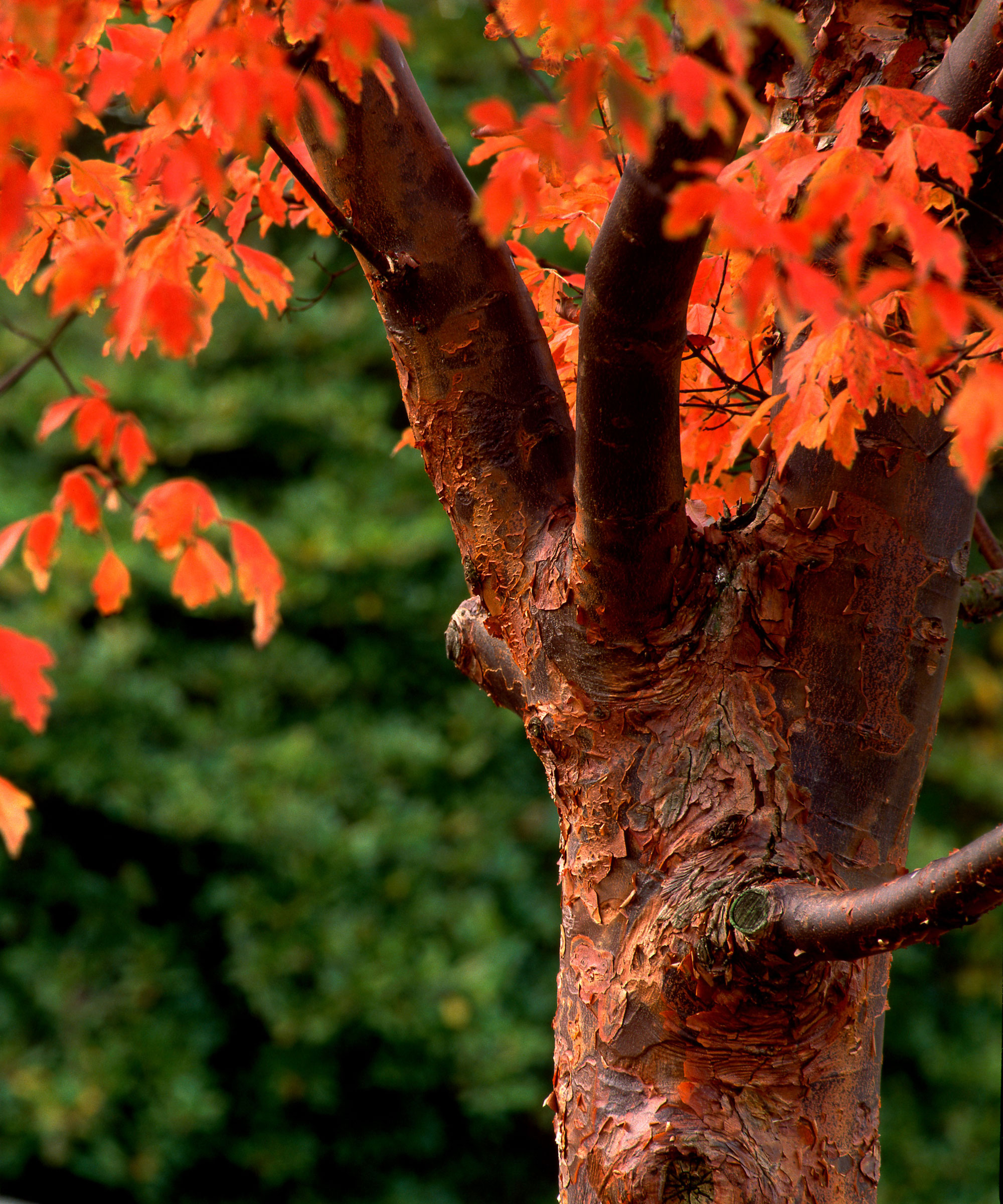
Paperbark maple (Acer griseum) is a small, deciduous maple, native to China. This attractive little ornamental tree is not considered invasive and is safe to grow. It will only grow to 30 feet (9m) tall and is suitable for gardens in USDA zones 4-8.
What makes this tree so special is its papery trunk. The bark peels back, creating papery curls that do not drop from the tree. In addition to the texture, the bark has interesting and varied colors. It begins brown, turns reddish, and ultimately becomes purplish-brown. Give your paperbark maple a sunny spot in moist soil that drains well. Try planting some Paperbark Maple seeds from Amazon to see if you can cultivate your own cinnamon colored bark from scratch.
3. Sycamore
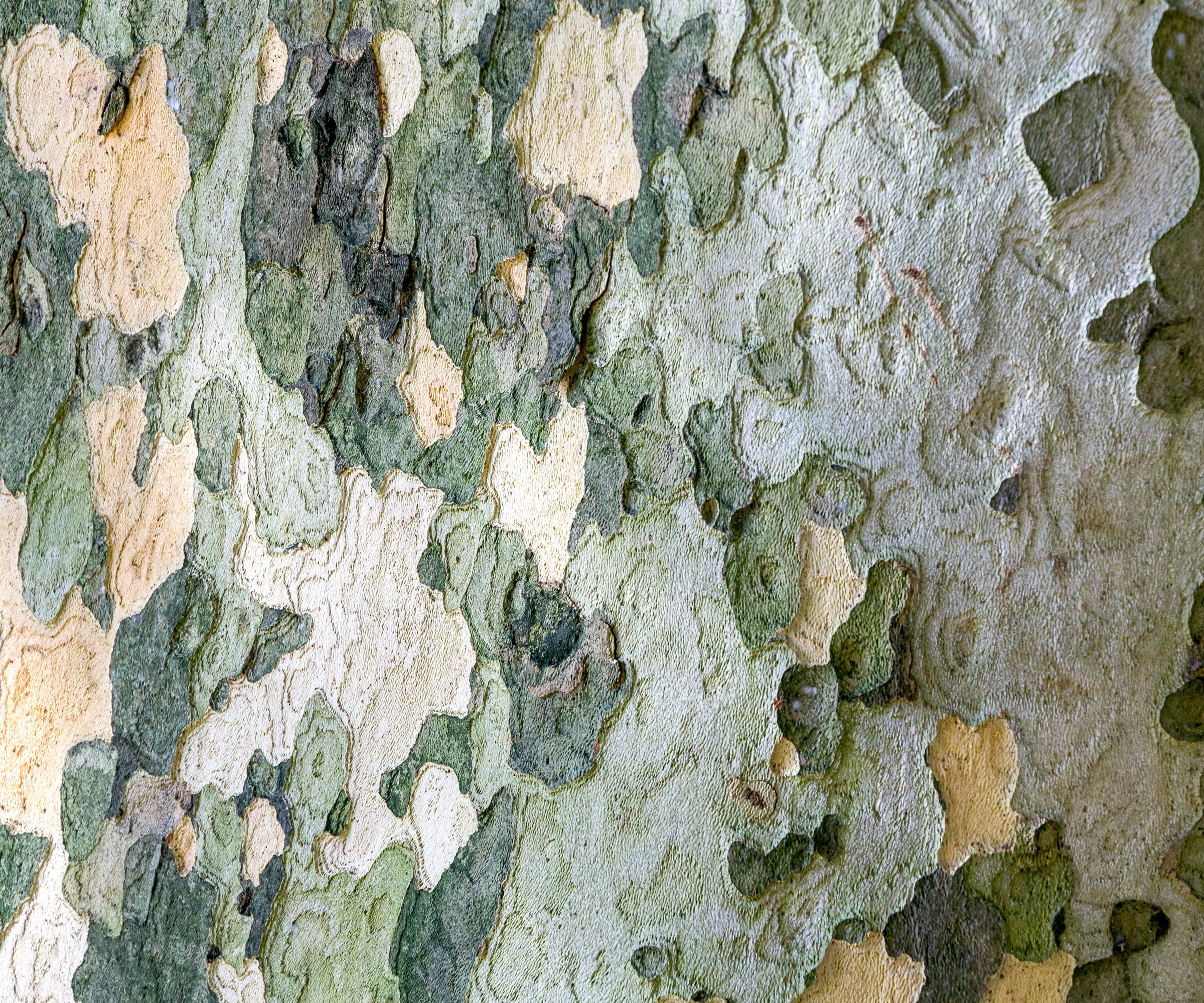
Another tree with peeling bark, the sycamore tree (Platanus occidentalis) is a giant suitable for yards with space. It will grow into a majestic shade tree, eventually towering up to 100 feet (30m) over your garden. Native to the central and eastern US, it grows well in USDA zones 4-9.
At the base of the tree, sycamore bark is scaly and gray-brown. Higher up, the outer bark peels off, revealing a smooth patchwork of different shades of white, cream, and pale green or gray. The upper parts of the tree are striking against a blue winter sky. Buy an American Sycamore Tree from Fast Growing Trees for a ready-grown plant with a strong root system.
4. Lacebark Pine

Lacebark pine has a patchy bark similar to that of sycamore but is an evergreen. Pinus bungeana is small and shrubby, but matures to a tall, 50-foot (15m) tree as it matures. It is native to China and suitable to grow in the US in USDA zones 4-8.
To enjoy the patchwork exfoliation of lacebark pine’s bark, you’ll need to be patient. It can take 10 years to mature enough for this process to begin, but once it does, it creates a spectacular specimen. If you’re feeling brave, why not try growing this one from seed? You can grow Lacebark Pine from seeds available from Amazon.
5. Tibetan Cherry
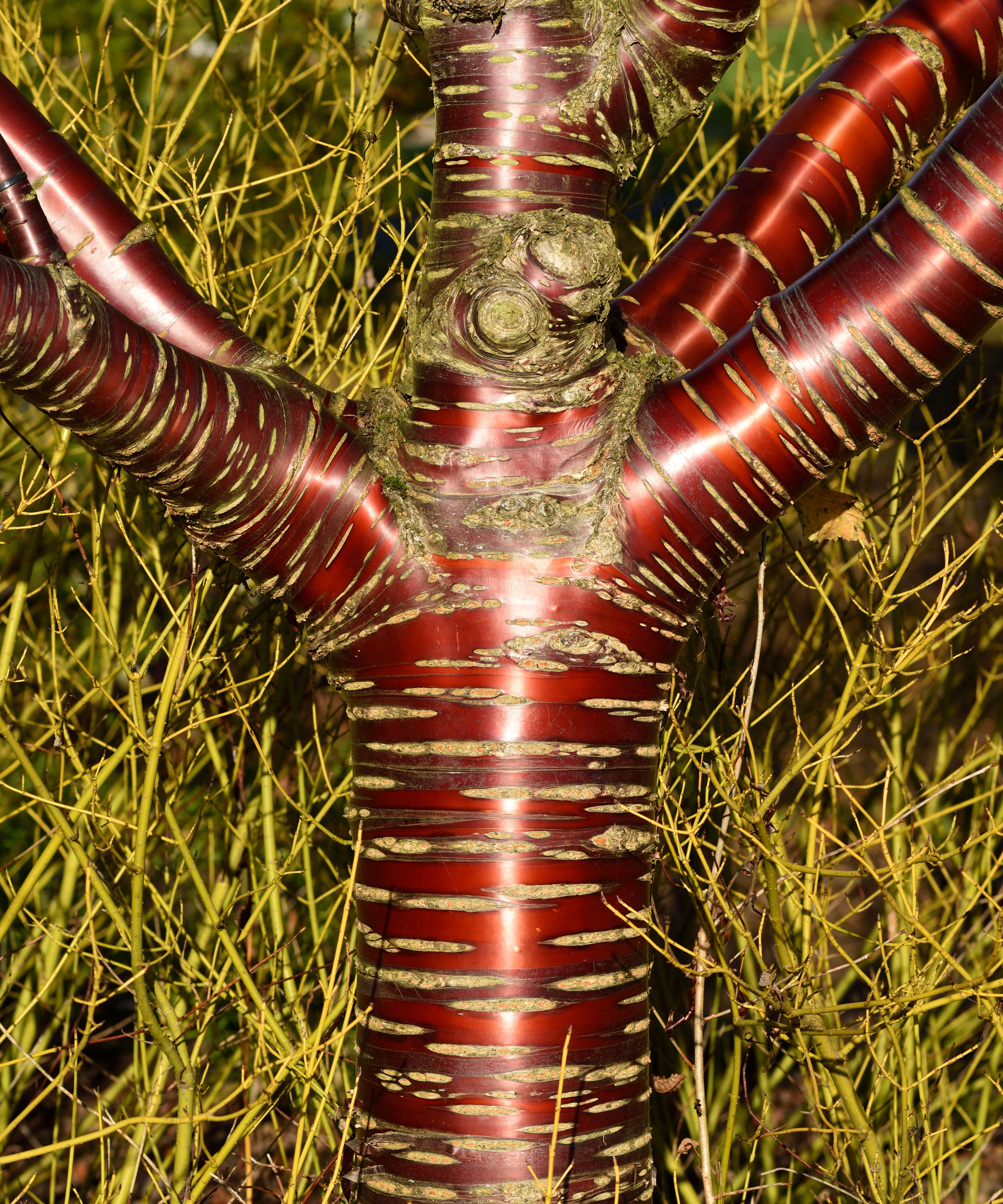
Forget everything you thought you knew about cherry trees! When it comes to trees with smooth bark, few are as distinctive as the Tibetan cherry (Prunus serrula). The red tree bark on this China native is very smooth, even shiny. The color is a deep reddish-brown. The shiny bark is revealed when older bark peels away from the tree.
This is a small tree, growing to about 30 feet (9m) in height at maturity. In addition to the beautiful bark, the Tibetan cherry tree with its pretty white flowers will bloom in spring. The fall color isn’t spectacular, but when the leaves drop, the bark really shines. Unfortunately, the suitable range for this tree isn’t large, but if you’re in USDA zones 5 or 6 and fancy growing this tree from seed, you can buy Tibetan Paper Birchbark Cherry Tree seeds from Amazon.
6. Gumbo Limbo

For a bark showstopper you can grow in warmer climates, consider the Florida native gumbo limbo (Busera simaruba). Also known as the tourist tree, its bark is reddish in color and peels, much like the sunburned skin of a Florida tourist.
Suitable for USDA zones 10-12, gumbo limbo can grow up to 60 feet (18 meters) tall and makes a good shade tree. This warm climate specimen blooms in spring and produces edible fruit, but only if you have both a male and a female tree near each other. You can buy the Gumbo Limbo Tree as a live pot plant from Eureka Farms.
7. Rainbow Eucalyptus
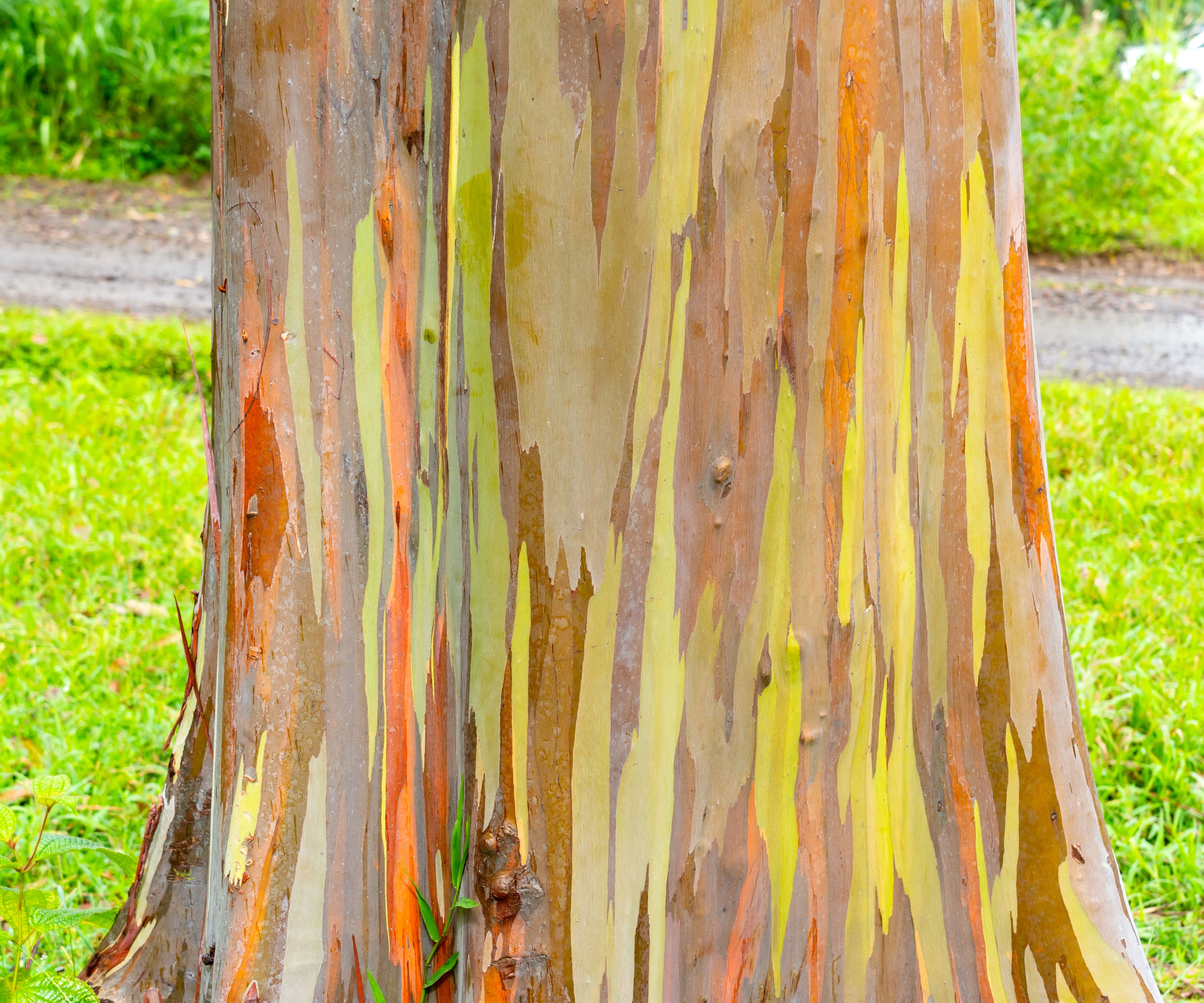
This stunning, large tree is only suitable for the warmest parts of the US. But if you can grow it, you’ll be rewarded with one of the most unique types of bark among all trees. Eucalyptus deglupta is a large evergreen native to Indonesia, the Philippines, and Papua New Guinea. It is one of the most exquisite eucalyptus tree types for its bark detail.
In the right conditions, which include consistently warm temperatures and plenty of moisture (zones 10-11), rainbow eucalyptus trees can grow over 100 feet tall. If you are after a tree with peeling bark, the bark on this one is showstopping. Outer layers peel off to reveal a true rainbow of colors, including purple, red, orange, green, and blue. Try growing your own rainbow by planting some seeds – you can buy Rainbow Eucalyptus seeds by the CZ Grain Store, available from Amazon.
Don’t Forget
- Retailers like Arbor Day Foundation, Kigi Nursery, Weaver Family Farms and other online tree nurseries offer bare-root or pot-grown saplings that ship to many parts of the US — good for home gardeners without local access to specialty stock.
- For more unusual trees (like lacebark pine, Tibetan cherry, gumbo limbo, rainbow eucalyptus), availability can be seasonal, and buyers need to check hardiness zone suitability, shipping restrictions, and whether the nursery ships to their state.
- Plant trees promptly on arrival for the best chances of establishing and maintaining robust health. It’s a good idea to add a light mulch in a ring around your trees, avoiding contact with the trunk. We love Back to the Roots Organic Premium Mulch from Amazon.
Many people choose trees for size, fall leaf color, or whether they are evergreen or deciduous. Too many overlook the variety of textures and color in tree bark when making these choices. If you’re looking for a new tree, consider how versatile bark can be, how enduring it is, and how dramatically it can enhance your space.
Need more ideas for timely gardening jobs and seasonal expert advice delivered straight to your inbox? Sign up for the free Gardening Know How Newsletter!

Mary Ellen Ellis has been gardening for over 20 years. With degrees in Chemistry and Biology, Mary Ellen's specialties are flowers, native plants, and herbs.
- Amy DraissDigital Community Manager